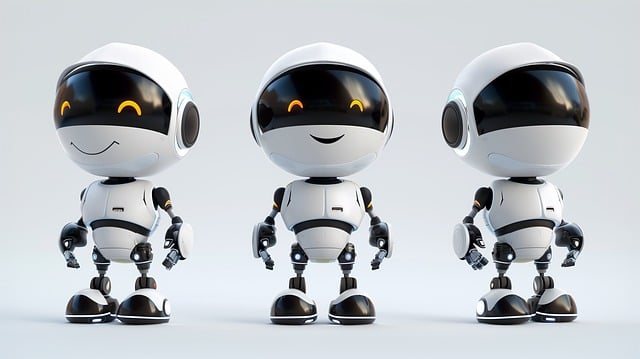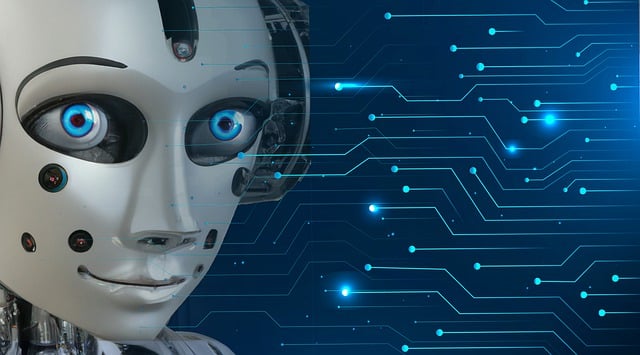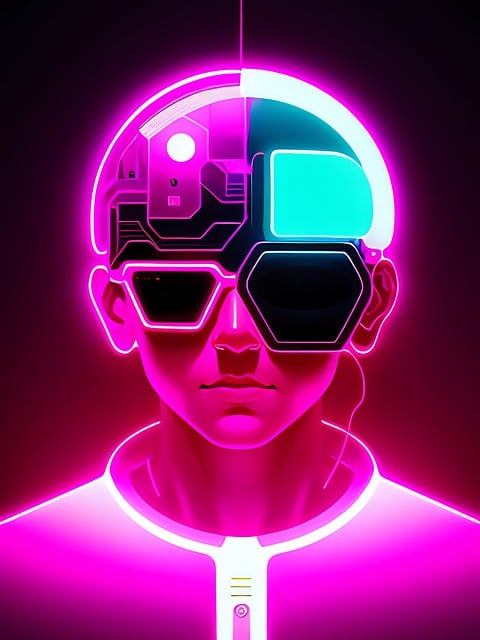- Understanding AI Chatbots: The Basics and Benefits
- – Definition of AI Chatbots
- – Key components of a chatbot (NLP, machine learning, etc.)
- – Common applications for chatbots in various industries
- – Advantages of integrating chatbots into business operations
Understanding AI Chatbots: The Basics and Benefits

– Definition of AI Chatbots

Chatbot AI systems are sophisticated software entities designed to simulate human conversation through text or voice interactions. These intelligent conversational agents leverage natural language processing and machine learning algorithms to understand user input, interpret intent, and generate responses that mimic natural dialogue. The primary objective of a chatbot AI is to engage users in a meaningful way by providing information, answering questions, or guiding them through a series of prompts to complete tasks. Chatbots can be integrated into various platforms, including websites, social media channels, customer service portals, and messaging applications, making them accessible and available 24/7 to handle user queries efficiently. They are trained on vast datasets to recognize patterns in language, allowing them to converse with users naturally and effectively. By incorporating advanced AI technologies such as deep learning and neural networks, chatbots can understand context, manage complex conversations, and learn from interactions to improve their performance over time. This continuous improvement cycle ensures that chatbot AI remains an indispensable tool for businesses aiming to enhance user engagement and streamline customer service operations.
– Key components of a chatbot (NLP, machine learning, etc.)

Creating an AI chatbot involves integrating several key components that enable it to understand, engage, and respond to users in a natural and effective manner. At the core of this technology is Natural Language Processing (NLP), which allows the chatbot to interpret human language, including grammar, syntax, and intent. NLP is facilitated by machine learning algorithms, particularly those within deep learning, which train the chatbot on vast datasets to understand context, sentiment, and even subtext. These machine learning models are trained using historical data, enabling the chatbot to predict responses with increasing accuracy over time. Additionally, a chatbot’s effectiveness hinges on its ability to access and utilize external databases or APIs, which can provide it with real-time information and enable personalized interactions. The integration of these components culminates in a sophisticated AI chatbot capable of handling a wide range of queries and tasks, thereby enhancing user experience and satisfaction.
Furthermore, the design and deployment of an AI chatbot require careful consideration of its intended application. For instance, chatbots used for customer service may be optimized for handling frequent inquiries and troubleshooting, while others might be tailored to provide personalized recommendations or support in e-commerce. The choice of machine learning frameworks and NLP libraries is critical; they can influence the chatbot’s performance, scalability, and the ability to adapt to new conversational scenarios. Employing a robust set of tools such as TensorFlow or PyTorch, along with NLP libraries like NLTK or spaCy, ensures that the chatbot can navigate complex interactions with ease and maintain a high level of engagement with users across various industries and platforms.
– Common applications for chatbots in various industries

– Advantages of integrating chatbots into business operations

In conclusion, creating an AI chatbot involves a blend of advanced artificial intelligence technologies and a deep understanding of user interaction. By leveraging natural language processing and machine learning, businesses can develop sophisticated chatbots that enhance customer service experiences, streamline operations, and provide 24/7 support. The applications for chatbots are vast and versatile, spanning across various sectors including healthcare, finance, and retail, to name a few. As AI technology continues to advance, chatbots will become increasingly intuitive and capable, offering significant benefits over traditional customer service models. For those looking to integrate a chatbot AI into their operations, the key lies in carefully planning the bot’s design, ensuring it aligns with user needs and business goals. With the right approach, businesses can harness the power of chatbot AI to achieve remarkable improvements in efficiency and engagement.
